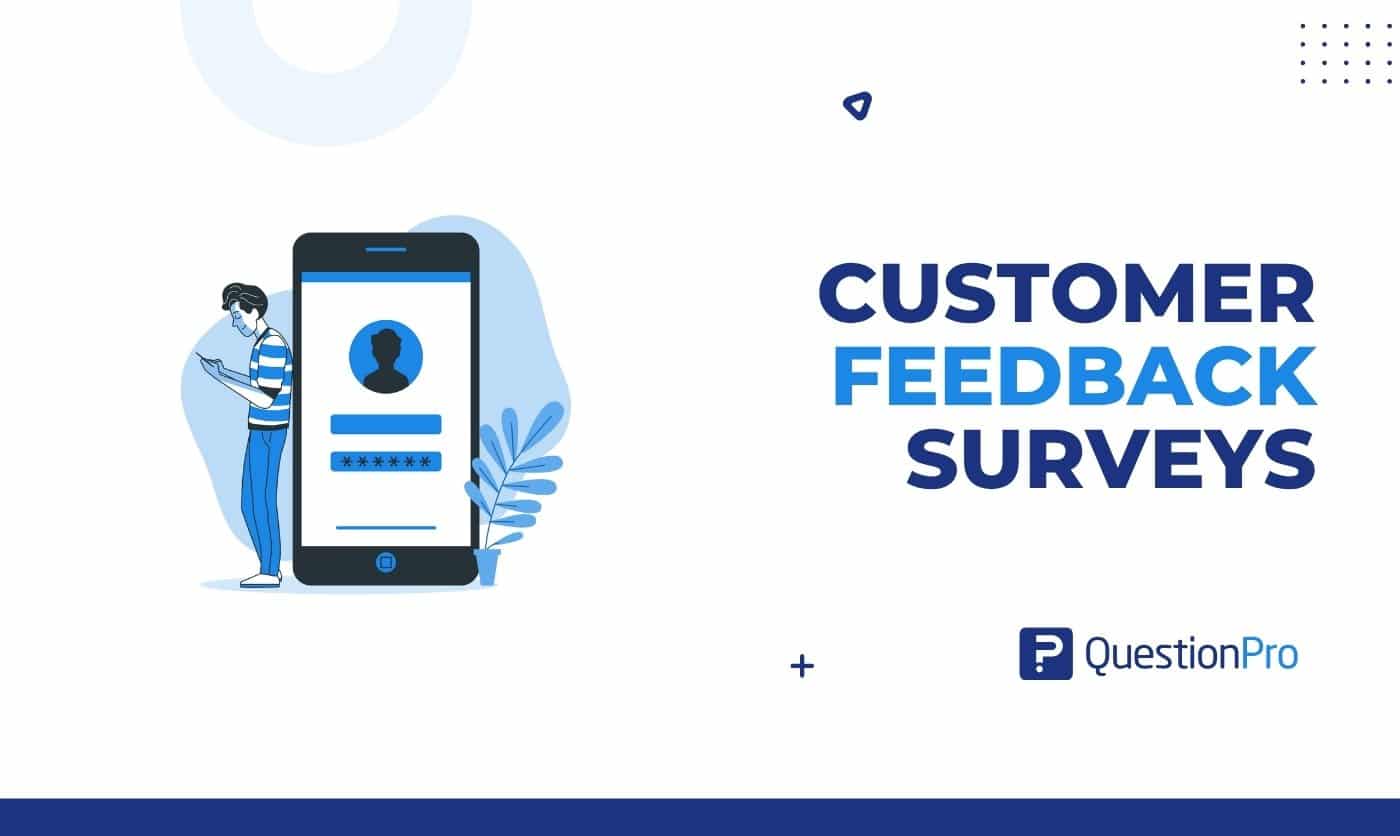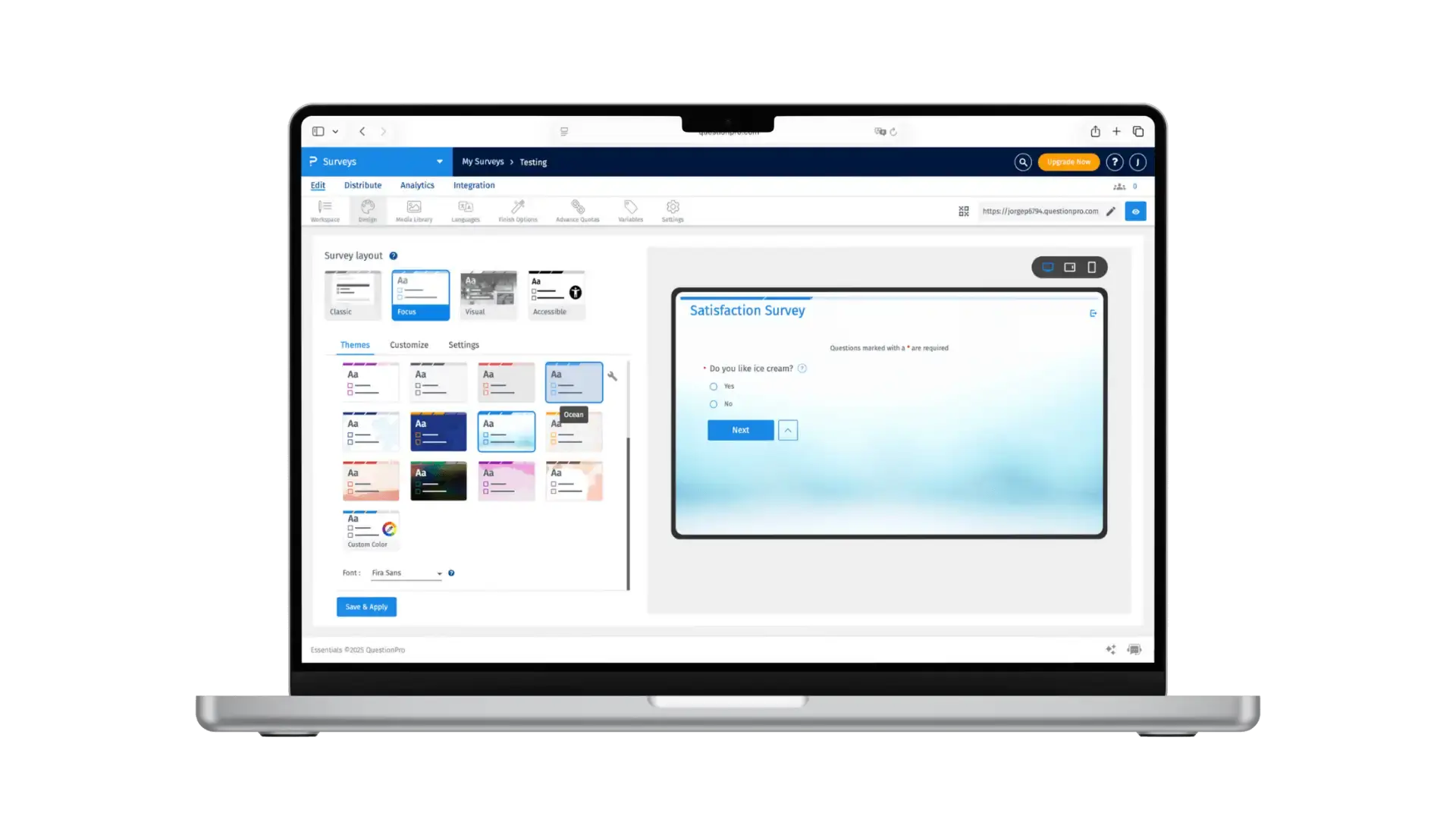
Customer feedback surveys are an effective tool for small businesses to collect customer opinions, comments, or reactions. These surveys help you understand what people think about your brand, what they like, and where you can improve. For small businesses, leveraging feedback surveys can make a big difference in fostering growth, loyalty, and customer satisfaction.
When you use customer feedback surveys, you can make informed decisions that lead to smarter changes, happier customers, and more sustainable growth. Let’s explore what customer feedback surveys really are and how small businesses can use them effectively.
What are customer feedback surveys?
Customer feedback surveys are online forms designed to collect customer opinions, comments, and reactions. These surveys allow customers to share their experiences and provide valuable insights into your business, products, or services.
These surveys can include a variety of question types, from multiple-choice to open-ended, and help you understand customer satisfaction, product performance, and areas for improvement.
For small business owners, customer feedback surveys are essential for identifying customer needs, gauging satisfaction, and staying ahead of competitors. Even a single survey can reveal important patterns that drive meaningful changes.
Why customer feedback surveys matter for small businesses
For large companies, customer feedback surveys often inform long-term strategies. But for small businesses, they provide immediate insights that can impact day-to-day operations. Each response you receive is a direct reflection of customer sentiment, allowing you to make adjustments quickly and effectively.
Using customer feedback surveys helps you:
- Improve products or services based on customer needs.
- Identify potential issues before they become bigger problems.
- Understand why customers choose your business over competitors, thereby refining your competitive edge.
Feedback surveys are also an affordable and efficient tool for small businesses. With digital survey tools, you can start collecting feedback immediately, even on a tight budget.

7 Practical strategies to get the most from customer feedback surveys
Here are seven practical strategies that will help your small business make the most of customer feedback surveys:
1. Use simple customer feedback surveys
Customer feedback surveys are one of the easiest and most effective ways to gather insights from your customers. Ask simple, clear questions about your customers’ recent experience, satisfaction with your product or service, and their likelihood of recommending your business.
Keep the surveys short and easy to complete. Aim for five to ten questions that customers can answer in just a couple of minutes. Long surveys can discourage participation, so focus on keeping the process quick and easy.
You can use tools like QuestionPro to create surveys with pre-made templates for customer satisfaction (CSAT) or voice of the customer surveys. These templates ensure you’re asking the right questions and save you time in the process.
You can explore examples of customer feedback survey templates on the QuestionPro website.
2. Encourage online reviews and ratings
While customer feedback surveys help you gather internal insights, online reviews give you visibility and credibility. Online reviews are public, and they influence how potential customers perceive your business.
Encourage satisfied customers to leave reviews on platforms that are relevant to your business:
- For local stores or service businesses: Google Business or Yelp is essential.
- For B2B or software companies: Platforms like TrustRadius or G2 are great for gathering feedback.
- For e-commerce or online shops: Use Trustpilot or Sitejabber to collect reviews.
Customer reviews are a great way to boost your online presence, and they also help potential customers see what others think about your business. Be sure to respond to reviews — both positive and negative — to show customers that their feedback is valued.
3. Collect feedback through email follow-ups
Email follow-ups are a great way to collect customer feedback shortly after a transaction or service. By sending a personalized email asking for feedback, you can gather insights that will help improve your offerings.
Keep your email friendly and brief. For example:
“Thank you for your recent purchase! We’d love to hear how your experience was. Could you spare a minute to share your feedback with us?”
Including a link to a short survey or a simple rating scale makes it easy for customers to provide feedback. If you’re using an email platform or CRM system, you can automate this follow-up process, ensuring that each customer receives a request for feedback.
Social media is a fast and interactive way to collect feedback from your customers. People often share their opinions on platforms like Instagram, Facebook, and LinkedIn, which gives you real-time insights into how they feel about your business.
When gathering feedback on social media, make sure to focus on the platforms where your target audience is most active. For example, use Instagram for consumer-focused businesses, while LinkedIn is more effective for professional services or B2B businesses.
You can use polls, Q&A sessions, and interactive stories to ask questions, gather opinions, and create engagement. Responding to comments and direct messages ensures that customers feel heard, building loyalty and trust.
5. Talk to customers directly
Direct conversations with your customers can provide some of the most valuable insights. Small businesses often have the advantage of personal relationships with their customers, making it easier to ask for feedback in a conversational and friendly way.
Engage with customers during in-person visits, phone calls, or service appointments. Use open-ended questions like:
- “How was your experience today?”
- “Is there anything we can do to improve your next visit?”
This approach helps uncover details that surveys might miss. Not only does it show customers that you care, but it also helps you get immediate feedback, which you can act on right away.
6. Add a feedback form to your website
Adding a feedback form to your website allows customers to provide insights anytime they visit. You can place a simple form on key pages like your homepage, contact page, or even a thank-you page after a purchase.
Keep the form short and easy to fill out. Ask for basic information such as a customer’s name, email (optional), and a short comment or rating.
Consider also adding a QR code that links directly to your feedback form or online review platform. Displaying this QR code in your store, on receipts, or on product packaging makes it easy for customers to quickly provide feedback with their phones.
7. Monitor trends using customer data
Not all feedback comes in the form of surveys or comments. You can also gather insights by analyzing customer data from your website, sales system, or social media interactions.
Track key metrics such as returning visitors, cart abandonment, and purchase frequency. This data can help identify areas where customers may be struggling or experiencing frustration. For instance, if you notice a decline in return customers, check for patterns in your feedback to see if there are common complaints or issues.
By combining data with direct feedback, you can gain a more complete understanding of your customers’ experiences.
How to analyze and act on customer feedback surveys
The true value of customer feedback surveys comes from analyzing and acting on the data you collect. After gathering responses, it’s important to categorize feedback into positive, negative, and neutral comments to spot common themes and recurring issues.
Look for patterns in feedback that point to areas of improvement, such as product features, customer service, or pricing. You can use tools like QuestionPro’s feedback analysis dashboards to automatically categorize and visualize your results.
Once you’ve identified trends, take action by implementing changes that will improve the customer experience. Communicate those changes to customers through follow-up emails, social media, or even a newsletter to show that their feedback is being used to enhance your offerings.
Best practices to keep customer feedback surveys flowing
To get the most from customer feedback surveys, it’s important to make them an ongoing part of your business operations. Here are a few best practices to keep the feedback loop consistent:
- Ask regularly: Make feedback part of every customer interaction.
- Make it easy: Keep forms and surveys short to increase participation.
- Offer incentives: Small rewards like discounts or exclusive offers can encourage customers to share their feedback.
- Be transparent: Show customers how their feedback has contributed to improvements.
These practices help build stronger relationships with your customers, which is essential for long-term business success.
Conclusion
Customer feedback surveys are a powerful tool for small businesses looking to improve their products, services, and customer satisfaction. By regularly collecting feedback and acting on it, you can strengthen relationships with customers and build a reputation as a business that listens.
Start with one simple method — whether it’s a short online survey, a QR code on your counter, or an email follow-up — and gradually expand from there. The key is to remain consistent and open to learning from your customers.If you’re ready to streamline your feedback collection process, explore QuestionPro’s free survey software to start utilizing customer feedback surveys. You’ll find everything you need to start gathering valuable insights today.
Frequently Asked Questions (FAQs)
Answer: Customer feedback surveys help you collect valuable insights directly from your customers, enabling you to identify areas for improvement, measure customer satisfaction, and make data-driven decisions that enhance your products, services, and overall customer experience.
Answer: Popular platforms include QuestionPro, SurveyMonkey, Google Forms, and Typeform. Each offers various features for survey creation, analysis, and reporting, helping businesses gather actionable feedback efficiently.
Answer: While surveys are excellent for collecting broad insights, they can’t fully replace in-depth interviews or focus groups. Surveys provide scalable, quantitative data, while interviews offer more qualitative, nuanced insights into customer experiences.
Answer: Not necessarily. Many platforms, like QuestionPro, offer affordable options with flexible pricing based on your needs. There are also free survey tools available, though they may have limitations in features or data analysis capabilities.
Answer: Not necessarily. Many platforms, like QuestionPro, offer affordable options with flexible pricing based on your needs. There are also free survey tools available, though they may have limitations in features or data analysis capabilities.
Answer: Common challenges include low response rates, biased responses, or misinterpreted data. To address these, make sure your surveys are clear, concise, and easy to complete. You can also incentivize participation to boost response rates.







